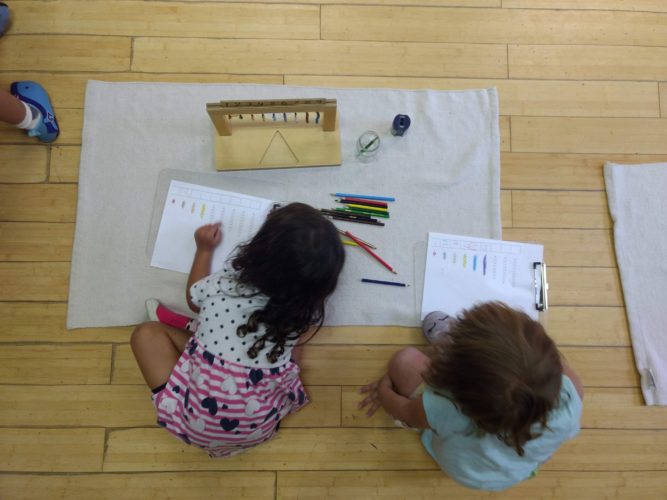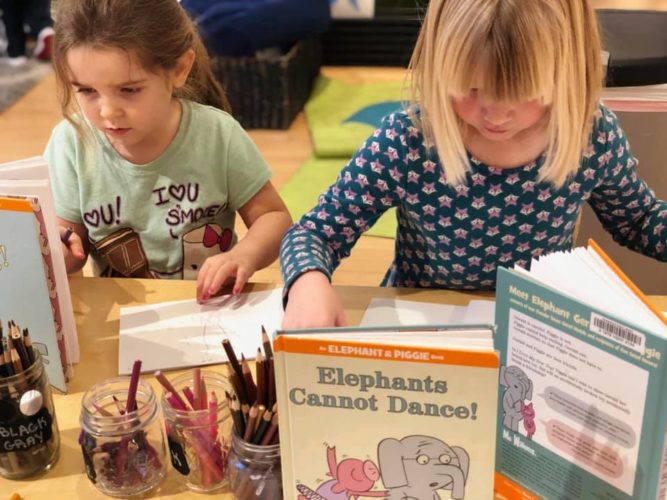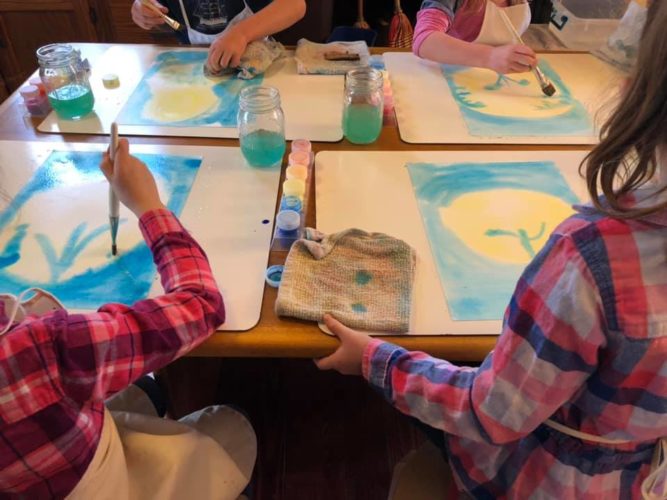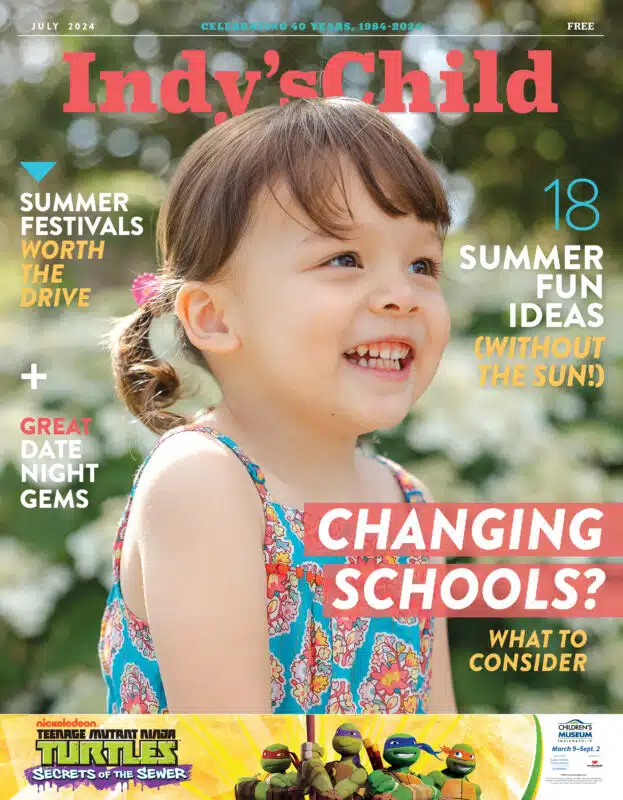Montessori, Reggio Emilia and Waldorf are all different styles of education with similar principles.
You may have heard of them before, but do you know what sets them apart? Here’s a refresher on these three unique philosophies of education.
Montessori
“The Montessori philosophy is based on the scientific research of Maria Montessori from over 100 years ago,” says Tara Franke, head of school at Northside Montessori School in Indianapolis. “The curriculum focuses on educating the whole child through individualized learning and fostering independence within a multi-age classroom. We model and teach positive social, physical, emotional and academic development. By offering individualized learning, we celebrate each child’s personality. We also help children develop a love of learning with a never-ending curiosity and a respect for cultural differences.”
A typical morning at a Montessori school begins with class work. During this time, children move through the classroom as they wish, choosing work that interests them individually. The teacher acts as an observer and keeps detailed notes on what each child is working on. They know when to offer a new lesson and when to stand back and let the learning happen organically. Teachers observe to make sure that progress is taking place at each child’s individual pace.
“I know enough to know that our school doesn’t work for everybody,” says Mary Sexson, teacher and school administrator at The Children’s House in Indianapolis. “Students at our school get a lot of freedom. They decide when they come to class. The teacher is in the classroom all day, and the students come to them. Students can go outside or to the playroom whenever they want. I think [the students] need to be self-aware, willing to ask lots of questions and willing to take responsibility for their own time.”
Parents can expect to walk into a quiet, peaceful and respectful classroom. All of the materials and furniture is intentionally organized for the students; everything is their size and meant to be touched and explored.
“Montessori schools offer an incredible academic opportunity, as well as an environment that nurtures compassion and kindness,” Franke says. “The teachers are prepared to meet their students where they are. We respect them and understand that they have remarkable talents to share with the world.”

Reggio Emilia
“The Reggio philosophy came to life shortly after World War II in Reggio Emilia, Italy,” says Kelsey Livingston, founder and director of The Sapling School, a multi-aged Reggio–inspired preschool program located in the heart of Broad Ripple. “Loris Malaguzzi, a young and inspirational teacher at the time, developed the approach around the idea that children should be the protagonists of their learning experiences.”
A Reggio-inspired learning space is relationship-driven, where children learn through their interactions with peers, parents, teachers and their environment. Teachers are very deliberate about the classroom design, hands-on activities and invitations to learn. It is believed that self-driven interaction with materials and the environment can be a powerful learning tool.
The emphasis on the “image of the child” is unique to the Reggio philosophy, as well. Children are seen as capable, competent and creative. The beliefs we hold about children drives the way we speak to them, listen to them, value them and the quality of materials offered.
“Parents are invited to be active participants in the classroom,” Livingston says. “We hope to reflect the lives and values of the families that make up our community in our space. The Reggio philosophy acknowledges that each family and child brings a unique set of experience and knowledge to the group. We celebrate these similarities and differences, and know that adults and children alike are co-learners with new opinions, ideas and information to contribute to the group. This prepares our students for citizenship in a diverse world.”
The Reggio approach focuses on being responsive to children and their interests, thoughts, questions and ideas using an emergent curriculum. Parents should expect children to have autonomy in a Reggio-inspired classroom, as they are presented with choices and encouraged to make their own decisions about how their day will go.

Waldorf
“The Waldorf education was initiated by Rudolf Steiner at the beginning of the 20th century, as a creative educational approach that would be flexible enough to foster a student’s unique individual development with a balance of cultivating social responsibility,” says Danielle Brain, organizer and teacher with IndyWaldorf, a community dedicated to the ideas of Waldorf education in Indianapolis. “In this way, Waldorf responds very much to the needs of the students and their time. Waldorf schools exist worldwide, born of the unique situations of their cultures and an impulse to educate children who feel free and empowered to create a positive impact in their communities.”
Waldorf education is for children of all ages, and can begin as early as infancy when parents and caregivers employ a healthy rhythm into their day, based on Waldorf methods. Parent-toddler classes are a gentle introduction to a class experience, and may be continued through the preschool and kindergarten years.
In a Waldorf kindergarten, the day is rhythmical and connects to a child’s sense of wonder. Imaginative play, storytelling, songs, playful movement, hearth skills, handwork and nature experiences are all integrated into a school day.
In a Waldorf grade school, the morning is composed of verse, movement, singing or instrument playing, and a main lesson. Children create their own textbooks from these lessons. The afternoon consists of handwork, gardening, woodwork, games or theater. A foreign language is taught at an early age and developed throughout the grades. When a qualified teacher is available, a special harmony of movement and speech is taught called eurythmy.
Waldorf curriculum is designed to meet the developmental needs of the children. It integrates a consciousness of the natural world, the arts and cultural-historical events.

While each of these philosophies of learning have components that are unique to their style, one thing is for certain: all of them have plenty to offer children in the way of an enriching educational experience.








[…] on children’s interests and beauty and the use of natural materials, but there are also some differences. Each of these methods can offer young children a unique learning […]